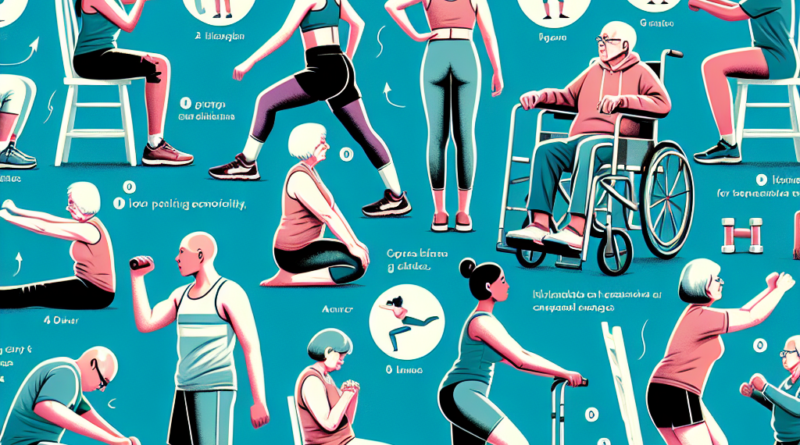Effective Home Workouts for People with Limited Mobility
Staying active and maintaining a regular exercise routine is essential for overall health and well-being. However, for individuals with limited mobility, this can be a challenging task. Whether you’re dealing with an injury, disability, or age-related issues, there are still plenty of ways to get your body moving in the comfort of your own home. This article will explore some effective home workouts that can be tailored to suit people with limited mobility.
Firstly, it’s important to remember that any form of physical activity is better than none. Even small movements can add up and have a positive impact on your health over time. Always consult with a healthcare professional before starting any new exercise program.
1. Chair Exercises: Chair exercises are a great way to start if you have limited mobility. They can be performed while seated or by using the chair as support for standing exercises. Some examples include leg lifts, arm raises, shoulder rolls, and seated marches. These exercises help improve flexibility and strength without putting too much strain on the joints.
2. Resistance Band Workouts: Resistance bands are versatile tools that can help build strength and flexibility. They come in different resistance levels so you can adjust according to your ability. You can perform exercises like band pull aparts, seated rows or leg presses right from your chair.
3. Yoga and Stretching: Yoga has been shown to improve balance, flexibility, and strength while also reducing stress and anxiety. Many yoga poses can be modified for those with limited mobility or performed with the aid of props like blocks or straps.
4. Light Cardio: If possible, incorporating light cardio into your routine is beneficial for heart health. This could include marching on the spot or doing arm circles while seated.
5. Strength Training: Strength training helps maintain muscle mass which is especially important as we age or deal with physical limitations. Simple weight lifting exercises using light dumbbells or even household items like water bottles can be done from a seated or standing position.
6. Balance Exercises: Improving balance can help prevent falls and injuries. Simple exercises like toe lifts or heel-to-toe walk (if standing is possible) can be beneficial.
7. Breathing Exercises: Deep breathing exercises not only help reduce stress but also improve lung capacity and oxygen flow in the body.
Remember, consistency is key when it comes to exercise. Aim for at least 30 minutes of moderate-intensity activity most days of the week, but even shorter periods of exercise can be beneficial. Listen to your body and modify as needed, taking breaks when necessary.
In conclusion, limited mobility does not mean you cannot exercise. With a little creativity and adaptation, you can maintain an active lifestyle right from your home. These workouts not only improve physical health but also boost mental well-being by promoting independence and confidence.





